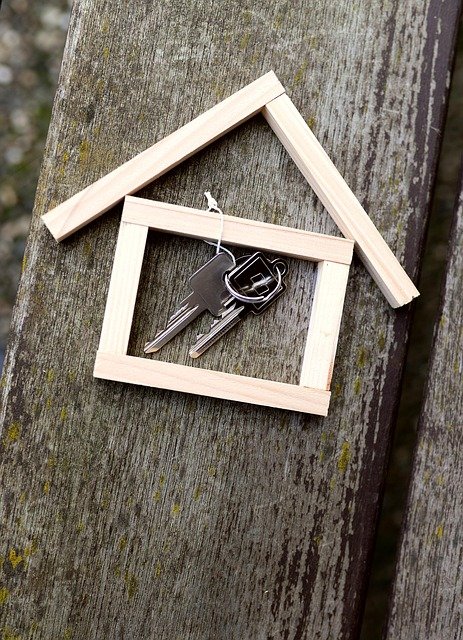Mini Prefab Homes: A New, Comfortable Life for Seniors
As retirement approaches, many seniors seek housing solutions that combine affordability, accessibility, and low maintenance. Mini prefab homes have emerged as an increasingly popular option, offering compact living spaces designed with older adults in mind. These factory-built dwellings provide the comfort of traditional housing while addressing the unique needs of aging individuals. From cost-effective pricing to customizable layouts, mini prefab homes represent a practical alternative for seniors looking to downsize without sacrificing quality of life.

The housing landscape for seniors has transformed significantly in recent years, with mini prefab homes becoming a viable and attractive option. These compact, factory-built residences offer numerous advantages tailored to the needs of older adults, from simplified maintenance to age-friendly design features. Understanding what these homes offer, their costs, and how they compare to traditional housing can help seniors make informed decisions about their living arrangements.
What Are Mini Prefab Homes and Why Do Seniors Choose Them?
Mini prefab homes are small-scale residential structures manufactured in controlled factory settings and then transported to their final location for assembly. Typically ranging from 400 to 800 square feet, these homes are designed for efficiency and functionality. Seniors gravitate toward these dwellings for several reasons: reduced maintenance responsibilities, lower utility costs, accessibility features, and the ability to live independently while downsizing from larger family homes. Many models incorporate universal design principles, including wider doorways, single-floor layouts, and accessible bathrooms that accommodate mobility aids.
How Much Do Mini Prefab Homes Cost?
Pricing for mini prefab homes varies based on size, materials, customization, and location. Generally, a basic 400-square-foot unit starts around $30,000 to $50,000, while more elaborate 650-square-foot models with upgraded finishes can range from $60,000 to $100,000 or more. These figures typically cover the structure itself but may not include land preparation, foundation work, utility connections, permits, and delivery fees, which can add $10,000 to $30,000 to the total investment. Compared to traditional construction, mini prefab homes often provide significant savings, with costs per square foot averaging $75 to $150 versus $150 to $250 for conventional builds.
| Product/Service | Provider | Cost Estimation |
|---|---|---|
| Basic Mini Home (400 sq ft) | Tumbleweed Tiny House Company | $45,000 - $65,000 |
| Standard Model (650 sq ft) | Allwood Outlet | $55,000 - $85,000 |
| Premium Senior Model (600 sq ft) | Dvele | $80,000 - $120,000 |
| Modular Mini Home (500 sq ft) | MODS International | $50,000 - $75,000 |
| Custom Senior Design (700 sq ft) | Blu Homes | $90,000 - $130,000 |
Prices, rates, or cost estimates mentioned in this article are based on the latest available information but may change over time. Independent research is advised before making financial decisions.
What Features Do 650 Square Foot Prefab Homes Offer?
A 650-square-foot prefab home provides sufficient space for comfortable senior living while remaining manageable. Typical layouts include one bedroom, one bathroom, an open-concept kitchen and living area, and sometimes a small office or storage space. Modern designs maximize natural light through strategically placed windows and incorporate energy-efficient appliances to reduce utility expenses. Many manufacturers offer customization options such as wheelchair-accessible showers, reinforced grab bars, slip-resistant flooring, and adjustable-height countertops. Storage solutions like built-in cabinets and multi-functional furniture help seniors make the most of limited square footage without feeling cramped.
Where Can Seniors Place Mini Prefab Homes?
Location flexibility is one advantage of mini prefab homes, though zoning regulations vary by municipality. Many seniors place these homes on family-owned property, creating accessory dwelling units that allow them to remain close to relatives while maintaining independence. Others choose dedicated tiny home communities designed for residents aged 55 and older, which often provide shared amenities and social opportunities. Rural properties, retirement communities, and manufactured home parks also accommodate these structures. Before purchasing, seniors should research local building codes, minimum square footage requirements, and whether the area permits permanent residential use of prefab structures.
How Do Mini Prefab Homes Compare to Traditional Senior Housing?
When evaluating housing options, seniors often compare mini prefab homes to assisted living facilities, retirement communities, and traditional homes. Assisted living can cost $3,500 to $6,500 monthly, totaling $42,000 to $78,000 annually, while owning a mini prefab home eliminates ongoing rent payments after the initial investment. Maintenance requirements are significantly lower than traditional houses, with smaller spaces requiring less cleaning, fewer repairs, and reduced property tax obligations. However, mini prefab homes require seniors to remain relatively independent, as they lack the built-in care services provided by assisted living facilities. The choice depends on individual health needs, financial resources, and lifestyle preferences.
What Should Seniors Consider Before Purchasing?
Several factors warrant careful consideration before committing to a mini prefab home. First, assess long-term mobility needs and whether the home can accommodate potential health changes through modifications. Second, investigate financing options, as traditional mortgages may not apply to structures under certain square footage thresholds; personal loans or specialized tiny home financing may be necessary. Third, calculate total ownership costs including insurance, utilities, maintenance, and land lease fees if applicable. Fourth, visit model homes or existing installations to evaluate quality and livability. Finally, consult with family members and financial advisors to ensure the decision aligns with overall retirement planning.
Mini prefab homes represent a forward-thinking housing solution for seniors seeking affordability, simplicity, and independence. By understanding the costs, features, and practical considerations involved, older adults can determine whether these compact dwellings align with their retirement vision. As the prefab industry continues to innovate with senior-friendly designs, these homes will likely become an increasingly common choice for those embracing a more streamlined lifestyle in their later years.




